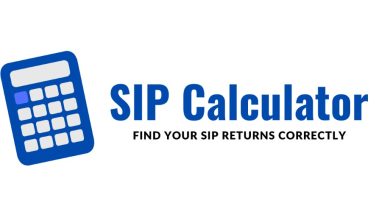The Dark Web’s Hidden Economy: BriansClub CM and the Trade of Stolen Credit Card Data

Introduction
The dark web is a hidden part of the internet that is not accessible through traditional search engines. It is known for its illicit activities and underground marketplaces where various illegal goods and services are traded. One such marketplace is briansclub cm, which has gained notoriety for being a hub for the trade of stolen credit card data. In this article, we will delve into the dark web’s hidden economy, explore the workings of BriansClub CM, and discuss the implications of the trade of stolen credit card data.
The Dark Web and its Economy
Understanding the dark web
The dark web refers to a part of the internet that is intentionally hidden and requires specific software, such as Tor, to access. It provides users with anonymity and privacy, making it attractive to individuals seeking to engage in illegal activities. The dark web is home to various marketplaces that facilitate the trade of drugs, weapons, counterfeit documents, hacking tools, and stolen data, including credit card information.
The hidden economy of the dark web
The dark web operates as an underground economy, driven by illicit trade and anonymous transactions. It functions through hidden marketplaces that connect buyers and sellers of illegal goods and services. These marketplaces use cryptocurrencies, such as Bitcoin, for transactions, ensuring a certain level of anonymity for both parties involved.
BriansClub CM: The Trade of Stolen Credit Card Data
Introduction to BriansClub CM
BriansClub CM is one of the largest and most notorious marketplaces on the dark web for trading stolen credit card data. It was first discovered in 2015 and gained significant attention due to its vast database of stolen credit card information. The marketplace operates as a carding forum, where sellers offer stolen credit card data to potential buyers.
How BriansClub CM works
BriansClub CM follows a typical marketplace model, where sellers list their stolen credit card data for sale, and potential buyers can browse and purchase the information. The marketplace facilitates transactions using cryptocurrencies, ensuring a certain level of anonymity for both buyers and sellers. The stolen credit card data listed on BriansClub CM includes cardholder names, credit card numbers, expiration dates, CVV codes, and sometimes additional information, such as addresses and phone numbers.
The scale and impact of BriansClub CM
BriansClub CM has gained significant notoriety due to the sheer scale of its operations. It is estimated that the marketplace has had over 26 million credit and debit card records available for sale, making it one of the largest repositories of stolen credit card data. The impact of BriansClub CM extends beyond financial losses for individuals and businesses. Stolen credit card data can be used for various fraudulent activities, including unauthorized purchases, identity theft, and money laundering.
Law enforcement efforts against BriansClub CM
Law enforcement agencies around the world have actively targeted dark web marketplaces, including BriansClub CM, in an attempt to disrupt their operations and bring the individuals involved to justice. In 2019, a federal investigation resulted in the seizure of bclub cm‘s servers, leading to the shutdown of the marketplace. However, the closure of one marketplace does not eliminate the trade of stolen credit card data entirely, as new marketplaces often emerge to fill the void.
Implications and Countermeasures
Implications of the trade of stolen credit card data
The trade of stolen credit card data on the dark web has far-reaching implications for individuals, businesses, and financial institutions. The financial losses resulting from fraudulent transactions can be devastating for individuals, leading to damaged credit scores and financial hardships. For businesses, the fallout from a data breach can result in reputational damage, legal consequences, and financial liabilities. Financial institutions also bear the brunt of these activities, as they are responsible for reimbursing victims and implementing security measures to prevent future incidents.
Countermeasures against the trade of stolen credit card data
Efforts to combat the trade of stolen credit card data on the dark web require a multi-faceted approach involving various stakeholders. Financial institutions must implement robust security measures, such as encryption, two-factor authentication, and fraud detection systems, to protect their customers’ data. Enhanced collaboration between law enforcement agencies and international cooperation is crucial to identifying and apprehending individuals involved in dark web marketplaces. Additionally, individuals should practice good cybersecurity hygiene, such as using strong passwords, regularly monitoring their financial statements, and being cautious while sharing personal information online.
Conclusion
The dark web’s hidden economy thrives on the trade of stolen credit card data, with marketplaces like BriansClub CM playing a significant role in facilitating these illegal activities. The implications of this trade are extensive, impacting individuals, businesses, and financial institutions alike. Combating this illicit trade requires a comprehensive approach involving enhanced security measures, international cooperation, and individual vigilance. As technology continues to evolve, it is crucial to stay ahead of cybercriminals and protect ourselves from the potential dangers of the dark web.




